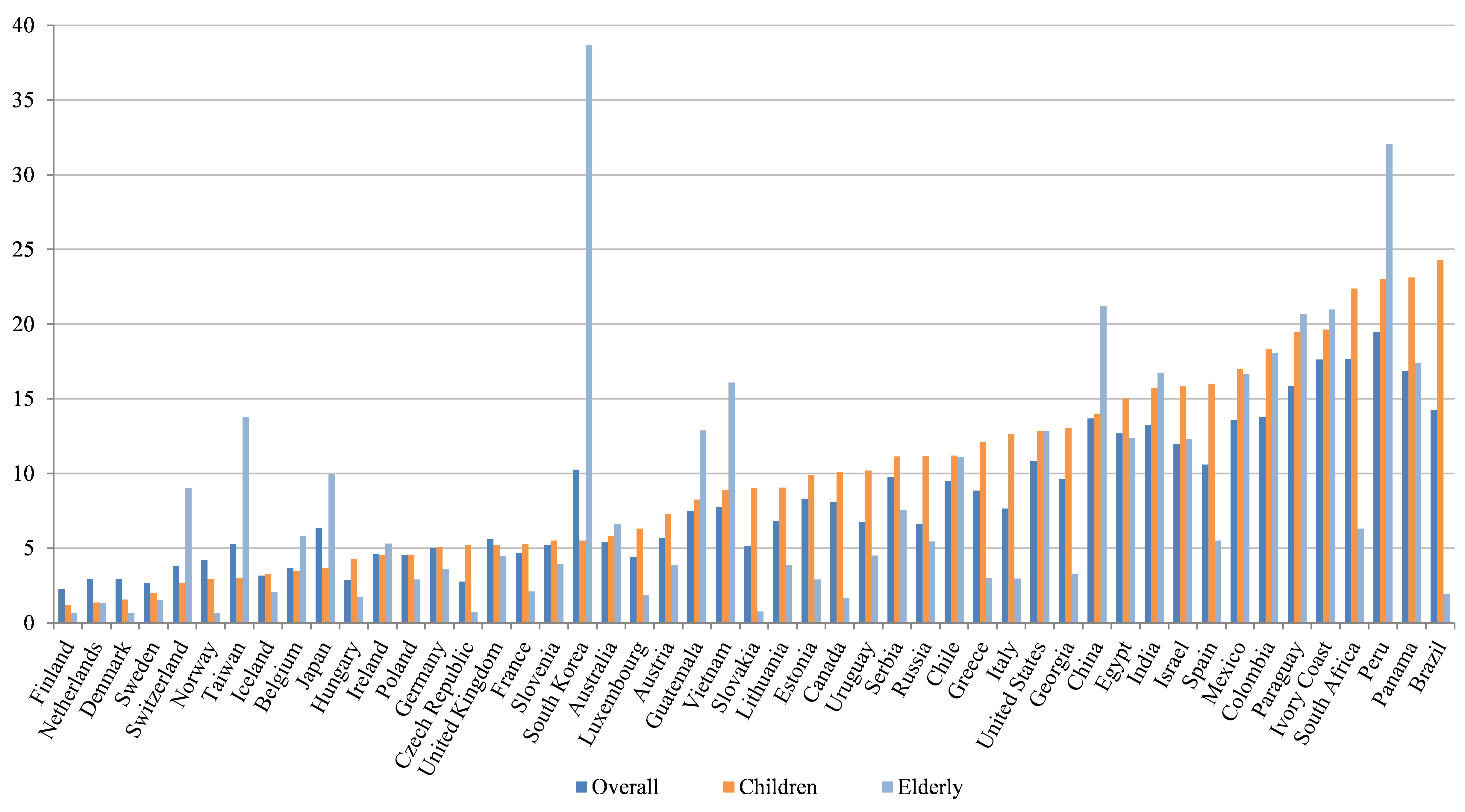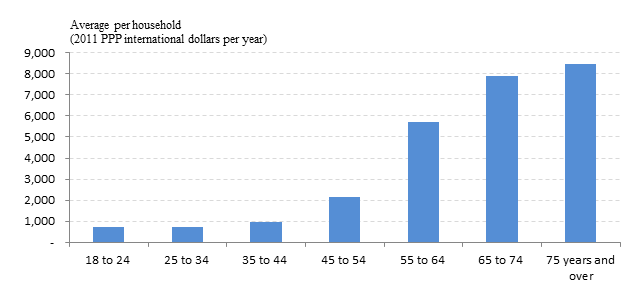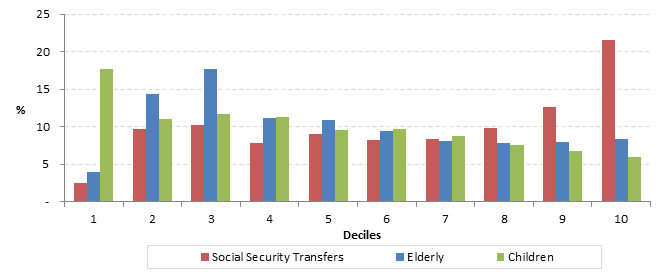Issue, No.12 (December 2019)
Poverty in Brazil: A Tale of Two Rates
Brazil, despite being a relatively young country with 10.2% of the population aged 65 or more compared with 25.6% under 18, has a social security system that has traditionally focused on the protection of the elderly. It was not before the beginning of the 21st century that social protection in the country started to include programs targeted at families with children, aimed at reducing poverty among them. The conditional cash transfer program Bolsa Família (Family Allowance), one of the largest such programs in the world, was introduced in Brazil in 2003. In this note we use the Luxembourg Income Study (LIS) Database to examine whether these distinctive features of Brazilian social policy are reflected in the gap between poverty among children and among the elderly and how Brazil compares with other countries in this respect. We also look at the incidence of social security transfers by age and by income group, as well as at the position of children and the elderly within the total income distribution in Brazil.
LIS Key Figures provide estimates of poverty rates for three relative poverty lines: 40%, 50%, and 60% of the country median equivalised household disposable income.1 Figure 1 shows poverty rates for children (under 18 years), the elderly (65 years and over), and the overall population in LIS countries based on the 40% of median income threshold, which can be interpreted as severe poverty (Mazeikaite 2019). It can be seen that of all 49 LIS countries, Brazil has the highest child poverty rate (24.3%). In contrast, the relative poverty rate among the elderly in Brazil (1.9%) is one of the lowest. LIS Key Figures also estimate that in 2013 the child poverty rate in Brazil was lower (20.2%), which means that children’s wellbeing decreased relative to the rest of the population between 2013 and 2016. Among the elderly, however, the tendency in that period was an improvement in their relative position.
Figure 1: Relative poverty rates for the overall population, children and elderly
% of individuals with household income below 40% of median

Source: Elaborated by the authors from LIS Key Figures.Note: Figures refers to 2016 in the case of Brazil and to the latest available year for other countries.
The fact that the social security system in Brazil guarantees a basic pension to all elderly people in low income households, with a value set equal to the legal minimum wage, whose value has stayed just above the country’s median per capita income, can explain the very low rate of relative poverty among the elderly. However, the concentration of social spending on pensions goes well beyond the basic pension scheme and also reflects the quite generous retirement rules prevailing till recently, particularly for public servants. Figures 2 and 3, elaborated using LIS microdata, corroborate these points. Figure 2 shows that the average social benefit paid to households headed by young people is much lower than that paid to households headed by older people, including those aged around 50, since the social security rules allowed such an early retirement. Figure 3, in its turn, shows that children are disproportionately concentrated in the bottom decile of the income distribution (17.6%), while more than one third (34.2%) of social security transfers goes to the top two deciles.
Figure 2: Equivalised social security transfer by age of the head of the household, 2016, Brazil

Source: Elaborated by the authors from 2016 LIS database for Brazil. Note: Averages are calculated among households receiving social security transfers
Figure 3: Distribution of children, elderly and total social security transfers by decile group, 2016, Brazil

Source: Elaborated by the authors from 2016 LIS database for Brazil.Note: Households are grouped into deciles based on their equivalised disposable income.
The descriptive results presented in this note show that child poverty in Brazil is very high compared to national and international poverty rates, and that to a great extent this reflects the way public resources are distributed among age and income groups. While poverty at any age is of concern, there is near universal consensus that poverty among children deserves especial attention, not only for ethical reasons but also due to severe lifelong consequences such as poor health and reduced performance at school and also in the labour market later in life. Recently, Brazil underwent a reform of its social security system aimed at reducing spending on pensions, whose high level has critically limited investment in other social areas. Our findings highlight that this is a crucial measure and that tackling child poverty should be seen as a major priority in the Brazilian social agenda.
1 The procedure used by LIS to account for economies of scale is to divide household income by the square root of household members. For more details on LIS methodology, see LIS Key Figures.
References
| Mazeikaite, G. (2019).Trends in child poverty in LIS countries since the Great Recession, Inequality Matters – LIS Newsletter, Issue No. 11. |
